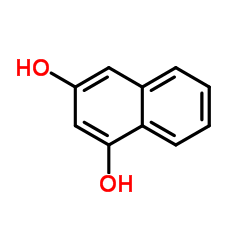Mutagenicity on chlorination of products formed by ozonation of naphthoresorcinol in water.
Y Sayato, K Nakamuro, H Ueno
Index: Mutat. Res. 226(3) , 151-5, (1989)
Full Text: HTML
Abstract
The mutagenicity of products formed by chlorination after ozonation of naphthoresorcinol in aqueous solution was assayed with Salmonella typhimurium strains TA98 and TA100 in the presence and absence of S9 mix from phenobarbital- and 5,6-benzoflavone-induced rat liver. Ozonated and subsequently chlorinated naphthoresorcinol was directly mutagenic, as was ozonated naphthoresorcinol, in both strains tested. The mutagenic activity at chlorination with 8 equivalents of chlorine per mole of naphthoresorcinol after ozonation was markedly higher than that at only ozonation. Of the identified ozonation products of naphthoresorcinol, muconic acid, after chlorination with 2 or 4 equivalents of chlorine per mole of the compound, induced direct mutagenicity against TA98 and TA100. The chlorination of glyoxal with 0.5 and 1 chlorine equivalents per mole of the compound was shown to produce direct mutagenicity toward TA98. The identification of the chlorination products of these compounds is also discussed.
Related Compounds
| Structure | Name/CAS No. | Molecular Formula | Articles |
|---|---|---|---|
 |
Naphthoresorcinol
CAS:132-86-5 |
C10H8O2 |
|
Selective antiproliferative activity of hydroxynaphthyl-beta...
2006-03-23 [J. Med. Chem. 49 , 1932-8, (2006)] |
|
Mutagenicity of products formed by ozonation of naphthoresor...
1987-11-01 [Mutat. Res. 189(3) , 217-22, (1987)] |
|
Effector-repressor interactions, binding of a single effecto...
2006-03-17 [J. Biol. Chem. 281(11) , 7102-9, (2006)] |
|
Dynamic synthesis of a macrocycle containing a porphyrin and...
2005-04-14 [Chem. Commun. (Camb.) (14) , 1842-4, (2005)] |
|
Determination of glycolaldehyde in the presence of hydroxypy...
1980-08-01 [Anal. Biochem. 106(2) , 342-3, (1980)] |